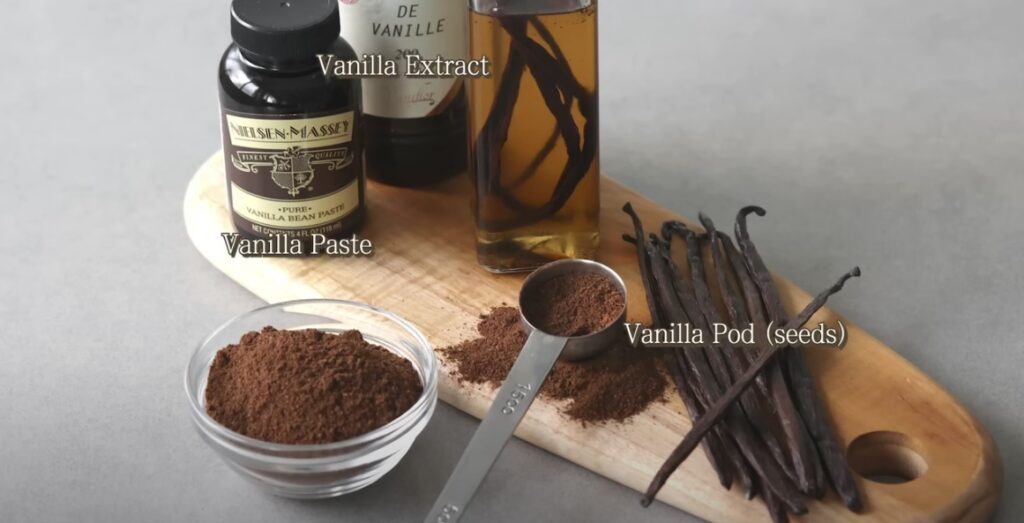Vanilla: History and Ways to Use

Vanilla, with its sweet and aromatic flavor, is one of the most beloved and widely used spices in the world. It adds a touch of warmth and richness to a variety of dishes, ranging from desserts to savory preparations. In this article, we will delve into the intriguing history of vanilla and explore the numerous ways it can be used in culinary creations.
A Brief History of Vanilla:
Vanilla has a fascinating history that dates back to ancient Mesoamerica, where it was first cultivated by the indigenous people of Mexico. The Totonac civilization is credited with discovering and domesticating vanilla, which they considered a sacred plant. They used it in religious ceremonies and as a flavoring for their drinks.
The Aztecs, who conquered the Totonacs, also adopted the use of vanilla and incorporated it into their cuisine. They called the vanilla orchid “tlilxochitl” and used it to enhance the flavor of their chocolate beverages.
Vanilla remained relatively unknown outside of Mesoamerica until the arrival of the Spanish conquistadors in the 16th century. They encountered vanilla during their exploration and colonization of the region and introduced it to Europe. The aromatic spice quickly gained popularity among European nobility and became a sought-after ingredient.
Vanilla Cultivation and Production:
Vanilla comes from the pod of the Vanilla orchid, a delicate climbing vine. Vanilla orchids require a specific tropical climate and specific pollination techniques for successful cultivation. Today, the majority of vanilla production takes place in Madagascar, followed by other countries such as Indonesia, Tahiti, and Mexico.
The process of growing vanilla involves hand-pollinating the flowers, which open for just a few hours each day. Once pollinated, the flowers develop into long green pods that are harvested when they are ripe. The pods are then subjected to a curing process that involves drying and fermentation, which develop the distinct flavor and aroma of vanilla.
Culinary Uses of Vanilla:
Vanilla is widely cherished for its sweet, floral, and comforting flavor. Here are some popular ways to use vanilla in cooking and baking:
1. Baking: Vanilla is a staple ingredient in many baked goods, such as cakes, cookies, muffins, and pastries. It adds depth and enhances the overall flavor profile of these treats.
2. Desserts: Vanilla is often the star of desserts such as custards, puddings, ice creams, and panna cotta. Its creamy and fragrant notes complement the sweetness and bring a delightful aroma to these indulgent creations.
3. Beverages: Vanilla can be used to flavor a variety of beverages, including coffee, hot chocolate, milkshakes, smoothies, and even cocktails. It provides a comforting and aromatic twist to these drinks.
4. Savory Dishes: While vanilla is primarily associated with sweet dishes, it can also be used in savory preparations. A hint of vanilla can elevate dishes like creamy soups, sauces for poultry or seafood, and marinades for meats.
5. Infused Liquors: Vanilla is often used to infuse liquors like vodka or rum, creating flavored spirits that can be enjoyed on their own or used in cocktails.
Tips for Using Vanilla:
To make the most of the flavor and aroma of vanilla, consider the following tips:
1. Quality Matters: Choose high-quality vanilla products, such as whole vanilla beans or pure vanilla extract. Look for beans that are plump, moist, and have a strong aroma. Pure vanilla extract should have a deep and rich scent.
2. Vanilla Bean Scraping: If using vanilla beans, split the bean lengthwise and scrape out the tiny black seeds inside. These seeds are highly aromatic and contain the essence of vanilla. They can be added directly to recipes to infuse their flavor.
3. Vanilla Extract: Pure vanilla extract is a convenient and versatile option. It can be used in various recipes, and a small amount can go a long way in enhancing the flavor. Add it to batters, doughs, and sauces to impart a delightful vanilla essence.
4. Homemade Vanilla Sugar: You can make your own vanilla sugar by placing a split vanilla bean in a jar of sugar. The bean will infuse the sugar with its aroma, creating a sweet and fragrant ingredient for baking and flavoring beverages.
5. Vanilla Infused Syrups: Create your own vanilla-infused syrups by combining sugar, water, and a vanilla bean. Simmer the mixture until the sugar dissolves and the vanilla flavor is infused. Use the syrup in coffee, cocktails, or drizzle it over pancakes and waffles.
6. Pairing Vanilla with Other Flavors: Vanilla complements a wide range of flavors, including chocolate, caramel, citrus, berries, and spices like cinnamon and nutmeg. Experiment with different combinations to create unique and delicious culinary creations.
7. Storage: Proper storage is essential to maintain the quality of vanilla products. Whole vanilla beans should be stored in a sealed container in a cool, dark place, away from heat and moisture. Pure vanilla extract should be tightly sealed and stored in a cool pantry.
Vanilla is a versatile and cherished spice with a rich history. Its sweet and comforting flavor has made it a favorite ingredient in desserts, baked goods, and a variety of other culinary creations. Whether you choose to use whole vanilla beans, pure vanilla extract, or homemade infusions, vanilla can elevate the taste and aroma of your dishes. With its captivating scent and delightful flavor profile, vanilla continues to be a beloved spice that adds a touch of indulgence to our culinary experiences. So, embrace the magic of vanilla and explore the countless ways it can enhance your cooking and baking endeavors.
Generated by Chat GPT